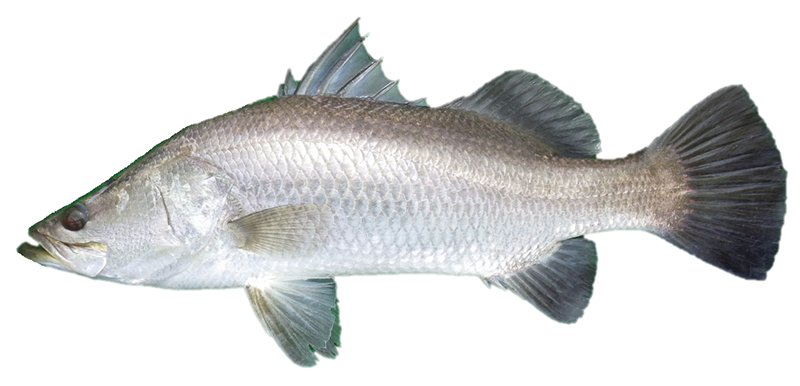Barramundi
The Northern Territory (NT) has the largest numbers of barramundi in Australia.
It is a popular target for commercial and recreational anglers because of the quality of its flesh, its fighting ability, size and readiness to take artificial lures.
Barramundi, commonly called 'barra', is also fished by Aboriginal people for its economic, health and cultural importance.
Read more about the barramundi fishery and licences.

Spawning season
Barramundi spawn between September and March.
As eggs and larvae require saltwater, spawning occurs in marine bays and river mouths.
Females spawn up to 32 million eggs during the spawning season.
Juvenile barramundi are 5mm to 50mm long and move into mangrove and wetland habitats during the Wet Season.
These habitats offer protection and a variety of foods.
In the Wet Season, juvenile barramundi 200mm to 300mm long are forced back into rivers and they either remain or move up into freshwater billabongs.
After three to five years most of the freshwater barramundi migrate back to the ocean to spawn.
Sizes
Barramundi can grow to be very large.
Some have been recorded over 45kg in weight and 150cm long.
There have been barramundi recorded at over 35 years of age, though a maximum age of 20 years is more normal.
General sizes are:
- one year old - 30cm to 40cm long
- two years old - 50cm to 60cm long
- three years old - 60cm to 80cm long.
Most barramundi are born as males but at about eight years of age they turn into females. They can grow to 100cm long by the time they are eight years old.
Any barramundi that is over 95cm long is probably a female.
What they eat
Barramundi eat just about anything that lives in or around water, including insects, spiders, crocodiles, prawns, fish and each other.
Research has shown that if there are high numbers of one-year-old barramundi from the previous year's spawning, they will eat the new recruits born the following year.
The size of the prey depends on the size of the barramundi.
The diet of a larger barramundi consists of 60% fish and 40% crustaceans, mostly prawns.
Smaller barramundi eat mostly prawns.
As water temperatures cool during the Dry Season, barramundi slow down and eat less frequently.
When best to catch
Barramundi activity increases with warmer temperatures and catch rates are generally higher.
During the build-up and Wet Season, water temperatures can be up to 10 degrees Celsius warmer than during the Dry Season.
Read more about fishing seasons and weather forecasts.
Commercial fishing
Tagging studies show recreational and commercial fishers take less than 5% of the barramundi in a river system per year.
There are a small number of commercial barramundi licences in the NT.
Give feedback about this page.
Share this page:
URL copied!